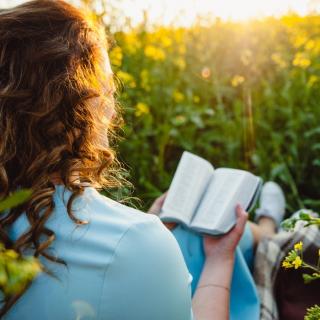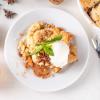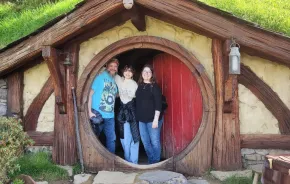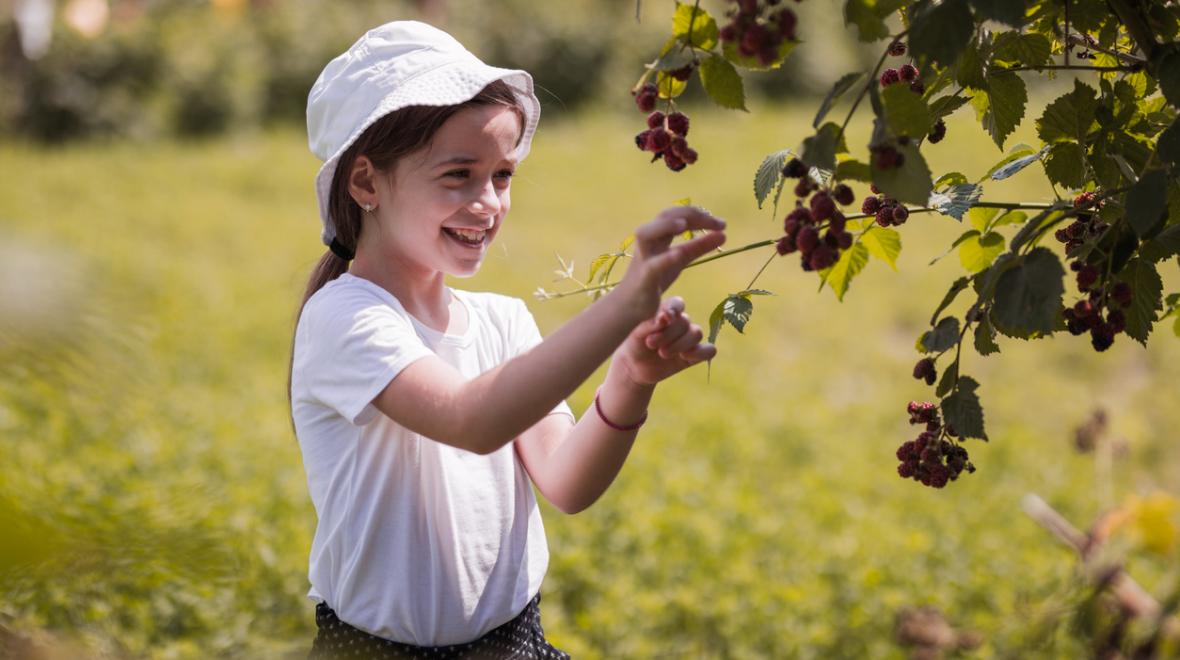
One of children's favorite foraging finds are wild berries, which are plentiful and diverse in local green spaces. “Wild Plants of Greater Seattle” author Arthur Lee Jacobson feels lucky to live here because we have such a wide variety. At this time of year, in urban woods, he harvests wild strawberries, salmonberries, Indian plum, gooseberries, red huckleberries, the first Oregon grape, blackcaps, thimbleberries and red flowering currants. July through October is prime berry season, so grab a bucket and go!
Following are some of the most common wild berries found in the Puget Sound area. Bring a field guide and doublecheck plant identification before you bite. Also, note that foraging is banned in some parks. Do your homework before you go.
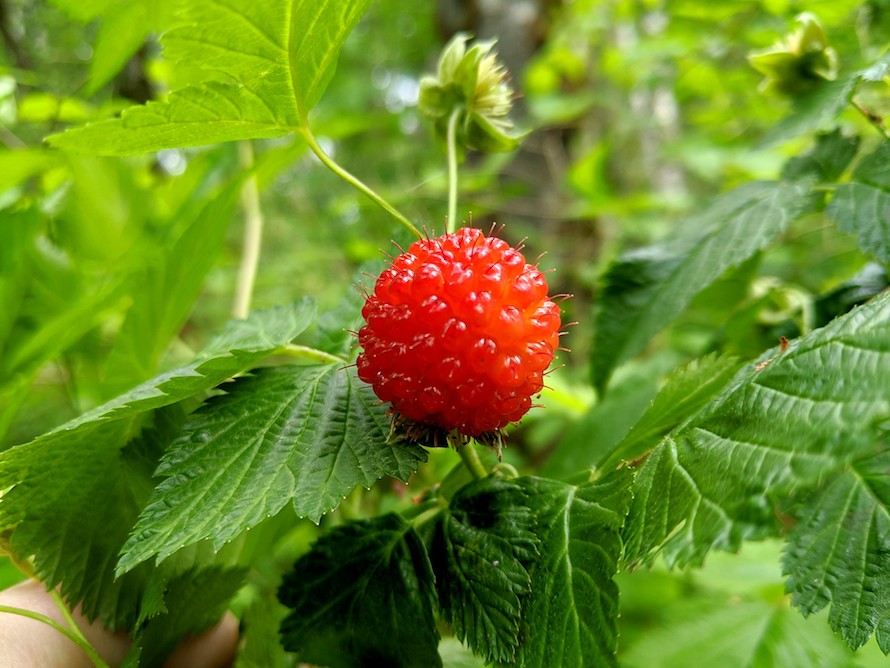
Salmonberry (Rubus spectabilis)
For Northwest Native Americans, ripe salmonberries announced the return of the Swainson’s thrush, a robin cousin with an ethereal fluting song known as the “salmonberry bird.” Salmonberry’s bright pink flowers give way to berries varying in color from orange — which tend to taste citrusy — to crimson red, with a distinctive pomegranate-like flavor. Salmonberry prefers wet soils and can be found along streams. Ripe from May into July, these berries are of the “stand and eat” variety; trying to transport them usually results in an unappetizing mush.
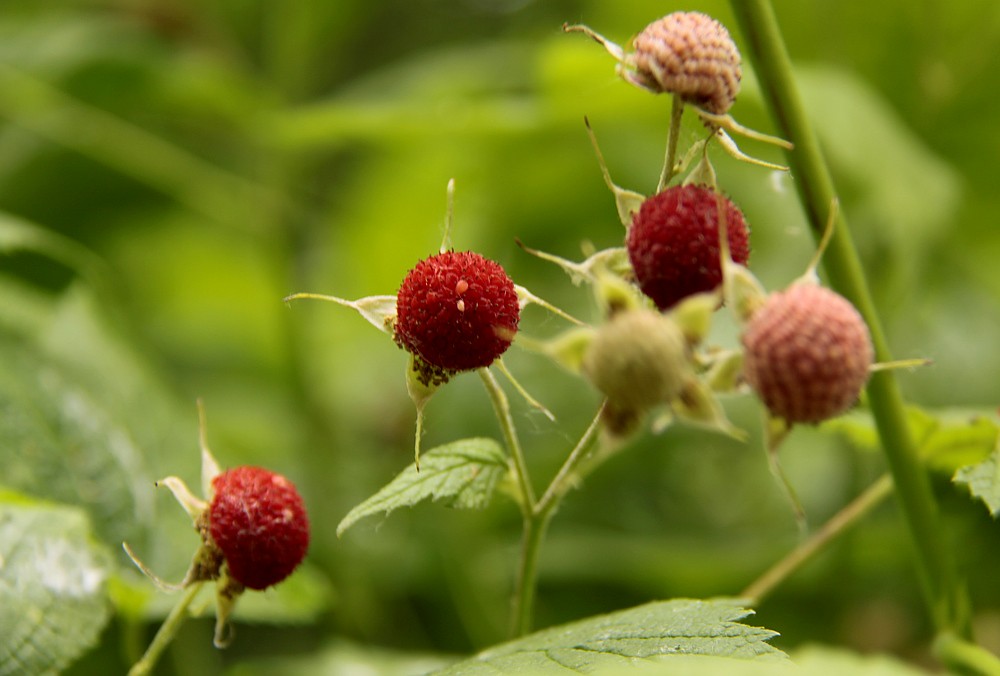
Thimbleberry (Rubus parviflorus)
Slipping easily off into your hand when ripe, this ruby-red berry is aptly named for its pronounced cup shape. “This is the best-tasting and least appreciated berry,” says Wechsler, who dreams of making a thimbleberry pie. “People don’t know about them as much as the others. Thimbleberries are a little bit sour, but not too much, which gives them a bit of pizzazz.”
The plant sports large white flowers and maple-like fuzzy leaves that Jacobson calls “camper’s toilet paper.” Thimbleberry leaves can also be used as makeshift containers, but because the berries do not travel well, they are also best enjoyed at the source. They ripen from late May to early August, with peak picking in July.

Red huckleberry (Vaccinium parvifolium)
Associated with rotting wood and especially fond of old cedar stumps, this deciduous huckleberry is high in vitamin C. The shiny, round red berries were used as fish bait by coastal Native Americans, who also dried them like raisins. The plant’s bright green leaves are small and thin, with the whole shrub taking on an airy appearance. The berries are tart but tasty and ripen from late June into September.
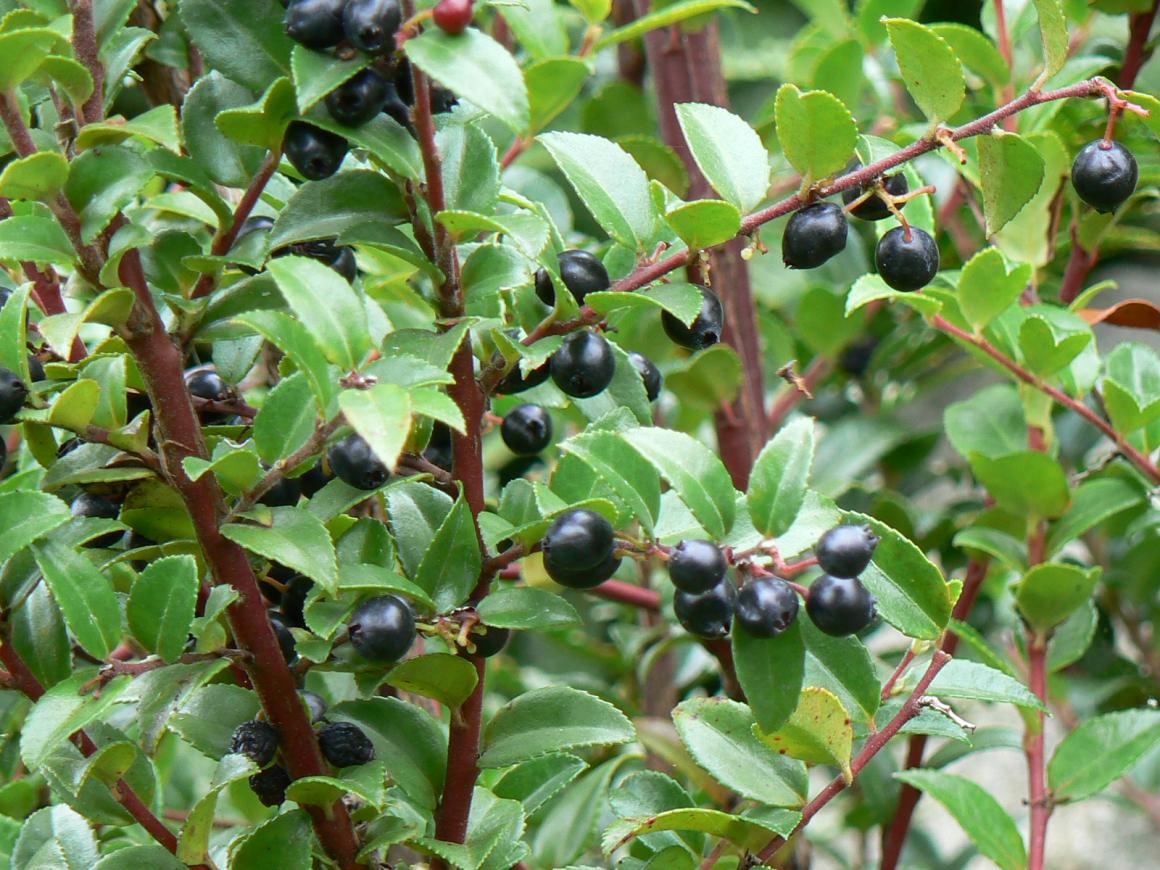
Evergreen huckleberry (Vaccinium ovatum)
These berries maintain their texture and flavor into spring and are said to taste best after a touch of frost — a special treat on a late-season hike. Harder to find in Seattle than its red cousin, the plants prefer shady woods. Jacobson recommends planting a few in your own yard (available at nurseries specializing in native plants) to enjoy their year-round glossy foliage, shade tolerance and berries. The berries ripen beginning in September and are shiny black or a dull powder blue.
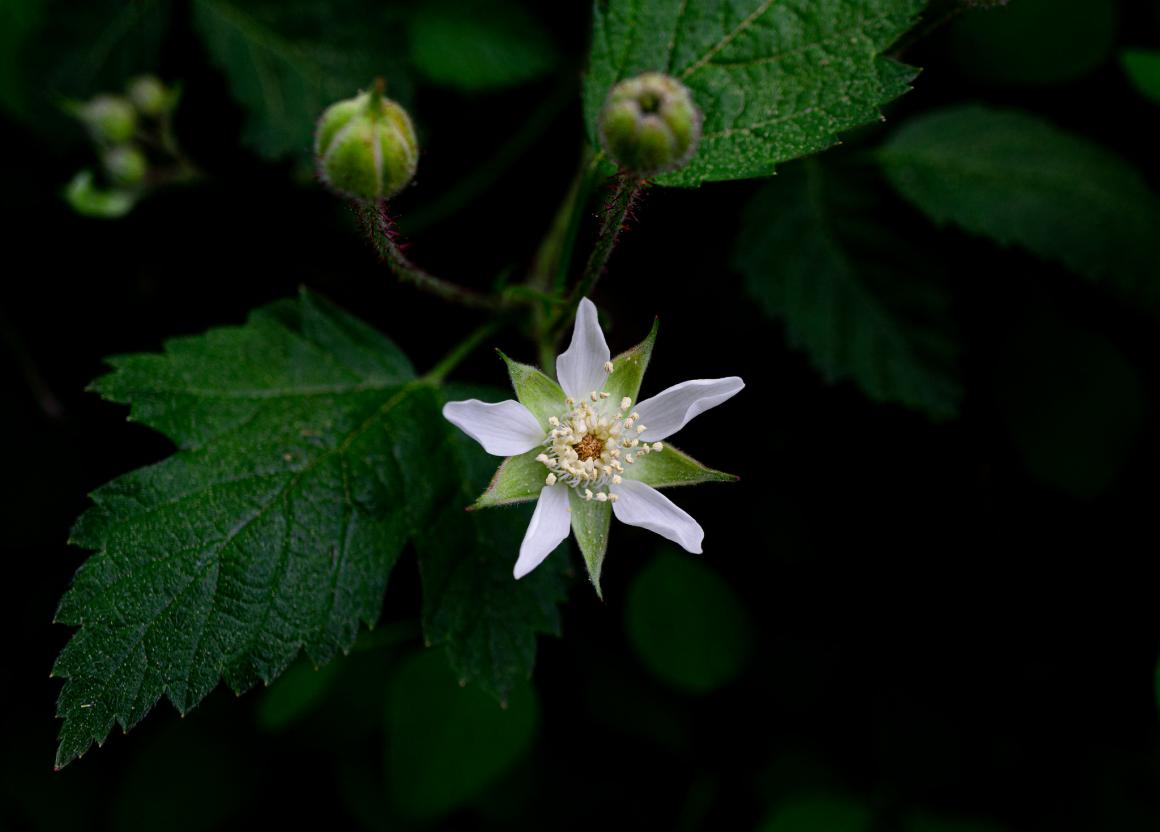
Trailing blackberry (Rubus ursinus)
Our only native blackberry winds a sweet but vicious vine through brushy open places seeking sun and it’s called “vegetable barbed wire” for its delicate but determined prickles. Because male and female flowers grow on separate vines, you may find male vines bearing no fruit. Its starry white or pink flowers bloom in April and May, with the small but worth-the-effort berries ripening in June and July. Trailing blackberry jam is a valued treasure in envied cupboards.

Himalayan blackberry (Rubus armeniacus, aka R. procerus or R., discolor)
Introduced to America in 1885, this blackberry grows wild all along the West Coast. Its tentacle-like canes can grow 30 feet in one season. It has tenacious thorns but it's worth seeking out the plump and sweet berries that ripen in July and August. Some people swear allegiance to either the “shade” blackberry or the “sun” blackberry — the cool juice of a shade-grown berry versus the blackberry pie warmth of one plucked from a sunny spot. You decide.
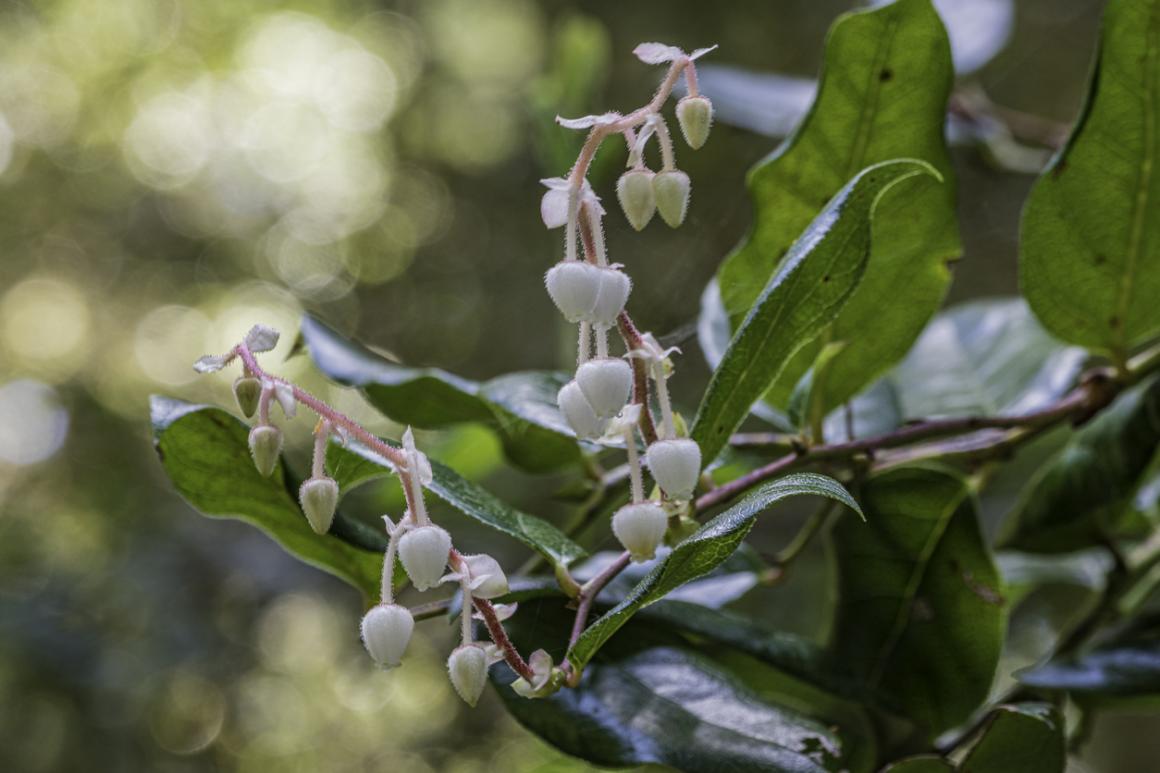
Salal (Gaultheria shallon)
Although some dismiss its fruit as merely “edible,” the salal berry can be a sweet treat. Look for the shade-grown bushes that tend to produce larger, juicier fruit. A key food staple for Native Americans, salal berries were a main ingredient in pemmican, early Power Bars made of dried berries, salmon, fish oil and nuts. The most common shrub-layer plant in our region, its purple to black berries have a long season, July through December. Don’t be put off by the fruit’s sticky coating, which can attract forest fuzz.
Top foraging spots in the Seattle area
Seattle: Visit environmental learning centers at Discovery Park, Seward Park and Camp Long to ask naturalists which berries are ripe and where to find them. The trails at Magnuson Park are great for blackberry picking, as is the Burke Gilman Trail.
Bellevue: Bridle Trails State Park encompasses more than 20 miles of trails with plentiful unsprayed Himalayan blackberries — look under the power lines for the biggest bramble patches.
North Seattle: Hamlin Park in Shoreline is a good place to forage huckleberries. Carkeek Park is home to all the berries on this list. Ask naturalists in the environmental learning center for help in finding or identifying berries.
Tacoma: Blueberry Park. A volunteer group actively maintains this former blueberry farm. Visit the website for details.
Olympia: Find wild berries, especially salmonberries, at Watershed Park.
Tips for safe picking
1. Identify the berries before eating them.
Given the scarcity of poisonous wild berries in Seattle, Arthur Lee Jacobson says it would be extremely hard to die from eating berries in the city, although this may not be true of other areas. He cautions that there is no simple test for whether a plant will make you ill, as everyone has individual allergies. A good rule of thumb is that if you’re not sure what it is, don’t eat it.
2. Avoid picking in areas sprayed with pesticides or along busy roadways.
Jacobson says that in urban parks and greenbelts, the benefits of eating a berry packed with fresh enzymes and nutrients probably outweigh the risk of contamination, but cautions that store-bought berries (unless organic) can be laden with pesticide residues. He doesn't wash wild berries because it often rinses away the flavor. Health guru Dr. Andrew Weil celebrates berries’ (especially purple varieties) phytochemical compounds, which boost our natural antioxidant defenses against cancer.
3. Practice ethical foraging.
Enjoy picking berries, but don’t pick them all. “Let other people find some and allow the berries to be eaten by birds and planted with their special fertilizer packets [aka poop],” says Wechsler. This is true for the berries mentioned here, except the fantastically successful Himalayan blackberry. Wechsler urges us to eat all of them as soon as they ripen and before the birds get to them.
Recommended resources
|
This article was originally written in 2007, and updated in 2022.




